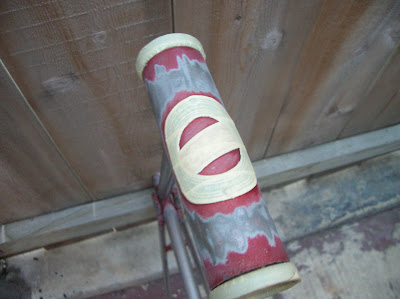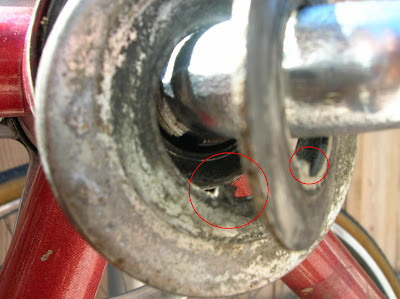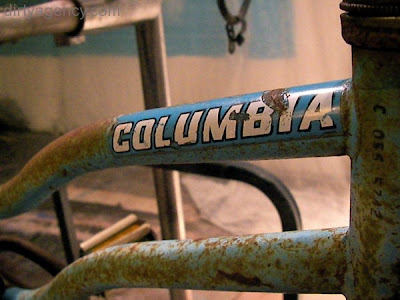LET IT SHINES. Sepeda ini adalah yang paling jangkung, dengan ukurannya yang 20,5 inch. Tidak semua bisa mengendarainya, karena sebentar saja sudah pegal-pegal terutama di otot lengan.
Alpinestars saat ini tidak berproduksi sepeda lagi, dan type ini merupakan Racing Replica yang legendaris diajang lomba XC pada jamannya. Ciri mereka sangat spesifik dengan model frame bongsor seperti itu dan top tube yang relatif panjang, namun bobotnya cukup ringan.
Sepeda ini dirakit pertama tahun 1993, dengan sangat memperhatikan warna polish aluminium ekspos, bahkan sejak baru semua sticker dan decal tidak dipasang. Pemilihan parts juga sangat diperhatikan, agar memperkuat nuansa kilaunya. Semua parts masih dipertahankan, kecuali beberapa parts yang dibutuhkan saat merubah dari 21 speed ke 27 speed dan rise-bar.
Perkembangan terakhir, sepeda ini kini dijadikan street-fighter alias hybrid, berhubung umur sepeda dan material frame dengan teknologi saat itu tidak memungkinkan lagi merambah medan off-road.
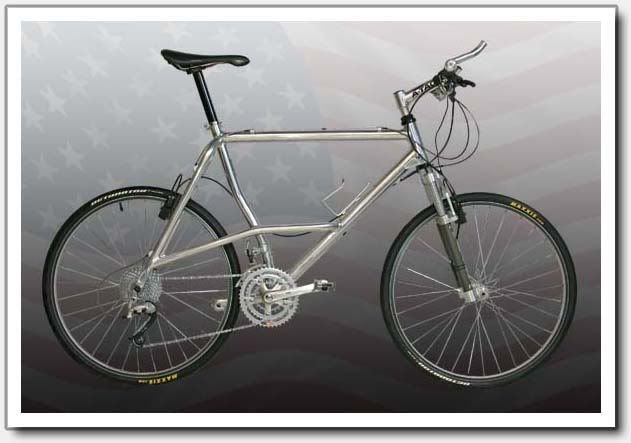
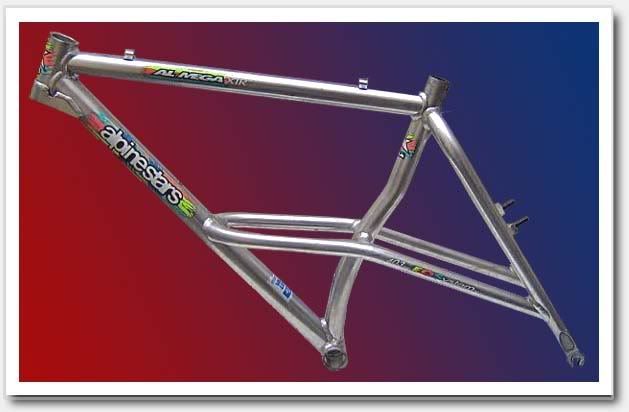
Spesifikasi:
Frame : Alpinestars Al-Mega Race Replica, EOS(elevated oversize) Easton aluminium
Frame year : 1993
Frame type : elevated chain-stay hard-tail
Frame size : 20,5 inch
Color : exposed aluminium
S/N : I-0268 F-9203 3596
Forks : Answer Manitou Easton E9
Front derailleur : Shimano XTR FD-M901
Rear derailleur : Shimano Deore XT RD-M760
Shifters : Shimano Deore XT SL-M751
Crankset : Shimano Deore XT FC-M730-SG
Cassette : Shimano Deore LX CS-M580
Chain : Shimano XTR CN-7701
Bottom bracket : Shimano SG
Pedals : Suntour XC Pro
Brakes : Magura Hydro-stop-Mountain SH-1
Handlebar : Answer Easton Hyper-Lite w/ Answer bar-ends
Stem : Answer A-Tac
Grips : Specialized Sidewinder
Headset : Tioga Tange
Seatpost : orig.
Saddle : Selle-Italia Flite Titanium
Hubs : Ringlé (front), Shimano Deore XT HB-M760 (rear)
Rims : Mavic Ceramics M231
Tyres : Schwalbe Marathon Slick (1.75)
Cables : Jagwire ZHB-204
Accessories : Cateye Velo 8 (cyclocomputer), Cateye HL-EL300 (head light), Cuelight (tail light), Giant (bottle cage
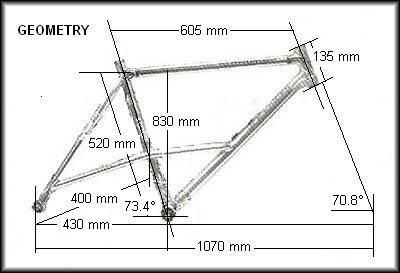
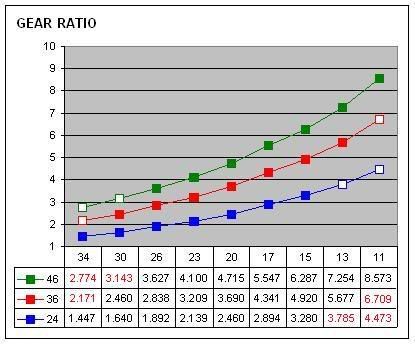




Alpinestars saat ini tidak berproduksi sepeda lagi, dan type ini merupakan Racing Replica yang legendaris diajang lomba XC pada jamannya. Ciri mereka sangat spesifik dengan model frame bongsor seperti itu dan top tube yang relatif panjang, namun bobotnya cukup ringan.
Sepeda ini dirakit pertama tahun 1993, dengan sangat memperhatikan warna polish aluminium ekspos, bahkan sejak baru semua sticker dan decal tidak dipasang. Pemilihan parts juga sangat diperhatikan, agar memperkuat nuansa kilaunya. Semua parts masih dipertahankan, kecuali beberapa parts yang dibutuhkan saat merubah dari 21 speed ke 27 speed dan rise-bar.
Perkembangan terakhir, sepeda ini kini dijadikan street-fighter alias hybrid, berhubung umur sepeda dan material frame dengan teknologi saat itu tidak memungkinkan lagi merambah medan off-road.


Spesifikasi:
Frame : Alpinestars Al-Mega Race Replica, EOS(elevated oversize) Easton aluminium
Frame year : 1993
Frame type : elevated chain-stay hard-tail
Frame size : 20,5 inch
Color : exposed aluminium
S/N : I-0268 F-9203 3596
Forks : Answer Manitou Easton E9
Front derailleur : Shimano XTR FD-M901
Rear derailleur : Shimano Deore XT RD-M760
Shifters : Shimano Deore XT SL-M751
Crankset : Shimano Deore XT FC-M730-SG
Cassette : Shimano Deore LX CS-M580
Chain : Shimano XTR CN-7701
Bottom bracket : Shimano SG
Pedals : Suntour XC Pro
Brakes : Magura Hydro-stop-Mountain SH-1
Handlebar : Answer Easton Hyper-Lite w/ Answer bar-ends
Stem : Answer A-Tac
Grips : Specialized Sidewinder
Headset : Tioga Tange
Seatpost : orig.
Saddle : Selle-Italia Flite Titanium
Hubs : Ringlé (front), Shimano Deore XT HB-M760 (rear)
Rims : Mavic Ceramics M231
Tyres : Schwalbe Marathon Slick (1.75)
Cables : Jagwire ZHB-204
Accessories : Cateye Velo 8 (cyclocomputer), Cateye HL-EL300 (head light), Cuelight (tail light), Giant (bottle cage












 16:25
16:25
 kaniamazdar
kaniamazdar


